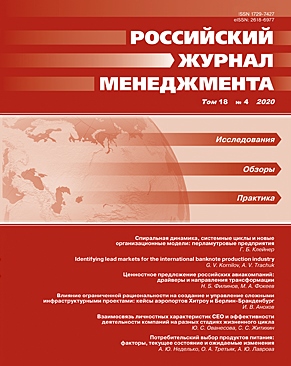Identifying lead markets for the international banknote production industry
DOI:
https://doi.org/10.21638/spbu18.2020.402Abstract
This paper contributes to theoretical study of innovation diffusion by exploring a role of lead markets factor for innovation adoption at international markets of products and technologies for national security. The study is based on data obtained from analysis of innovations in banknote production industry. The international banknote industry characterized by limited number of buyers (monopsony) and suppliers (oligopoly) is an example of highly innovative sector with important national security task to maintain integrity of currency circulation. It is a truly global industry focused on constant development of new security technologies adopted by most of the central banks. Our findings suggest the factor of lead market is one of the key elements in taking decision by the central bank to adapt certain security features and technologies for their banknotes. Geographical origination of a particular technology is been put aside when issue of national security is in place. Only the value of an innovation itself matters. We argue that lead market factor is a specific characteristic for of innovation diffusion in this sector that should be common for areas where government institutions act as single buyer when the supply is scarce i.e., military industry, space sector, some pharmaceutical markets etc.
Keywords:
lead markets, banknote industry, national security, diffusion of innovations, currency circulation
Downloads
References
REFERENCES
Downloads
Published
How to Cite
Issue
Section
License
Articles of the Russian Management Journal are open access distributed under the terms of the License Agreement with Saint Petersburg State University, which permits to the authors unrestricted distribution and self-archiving free of charge.





